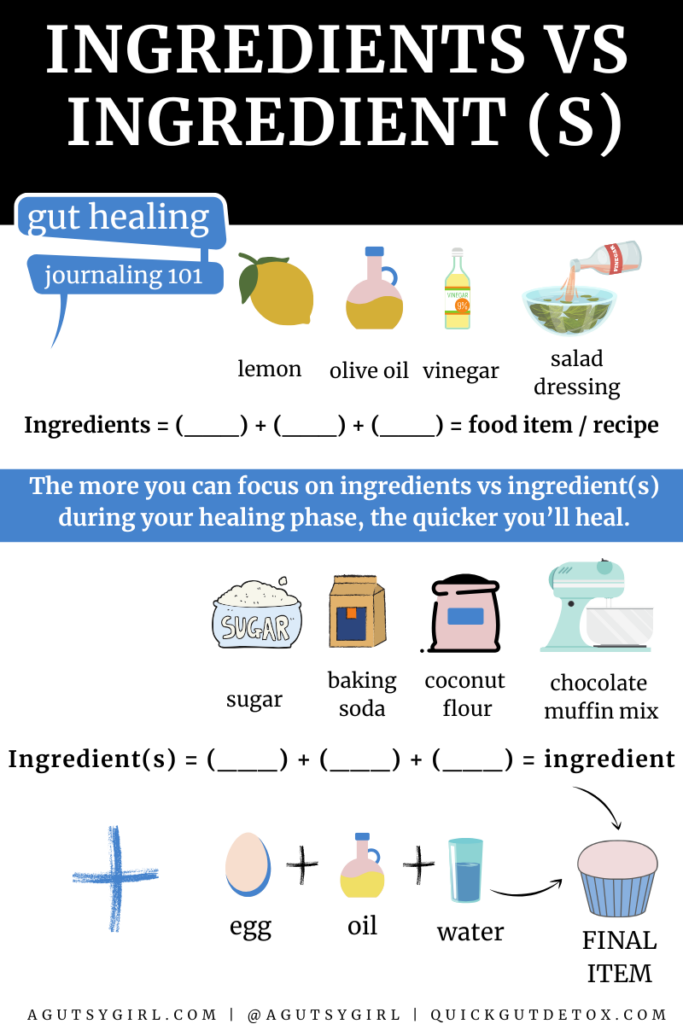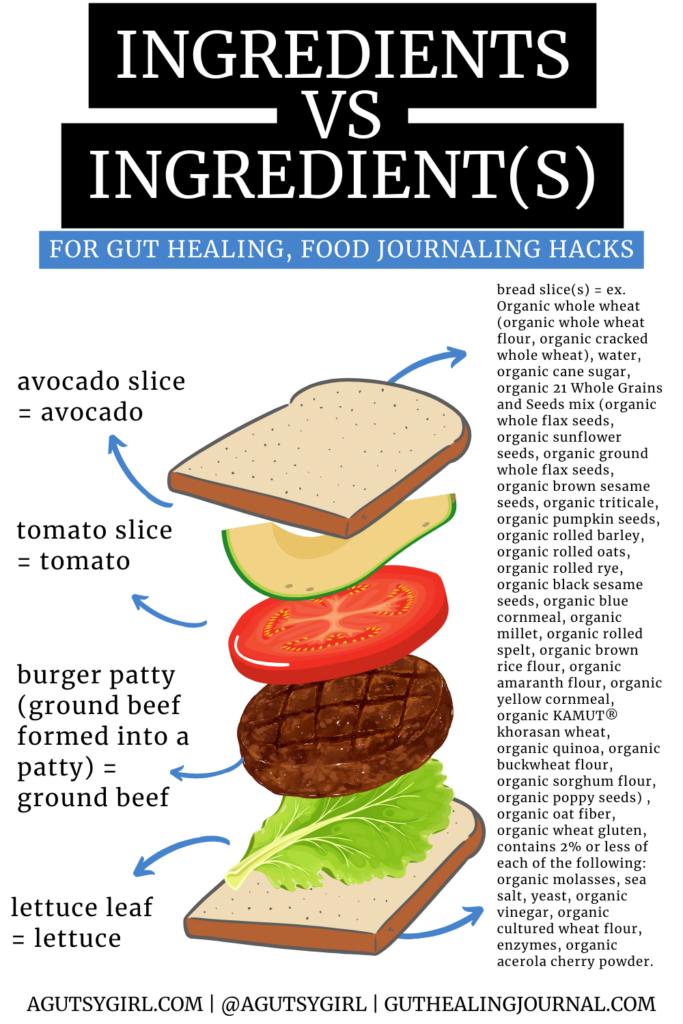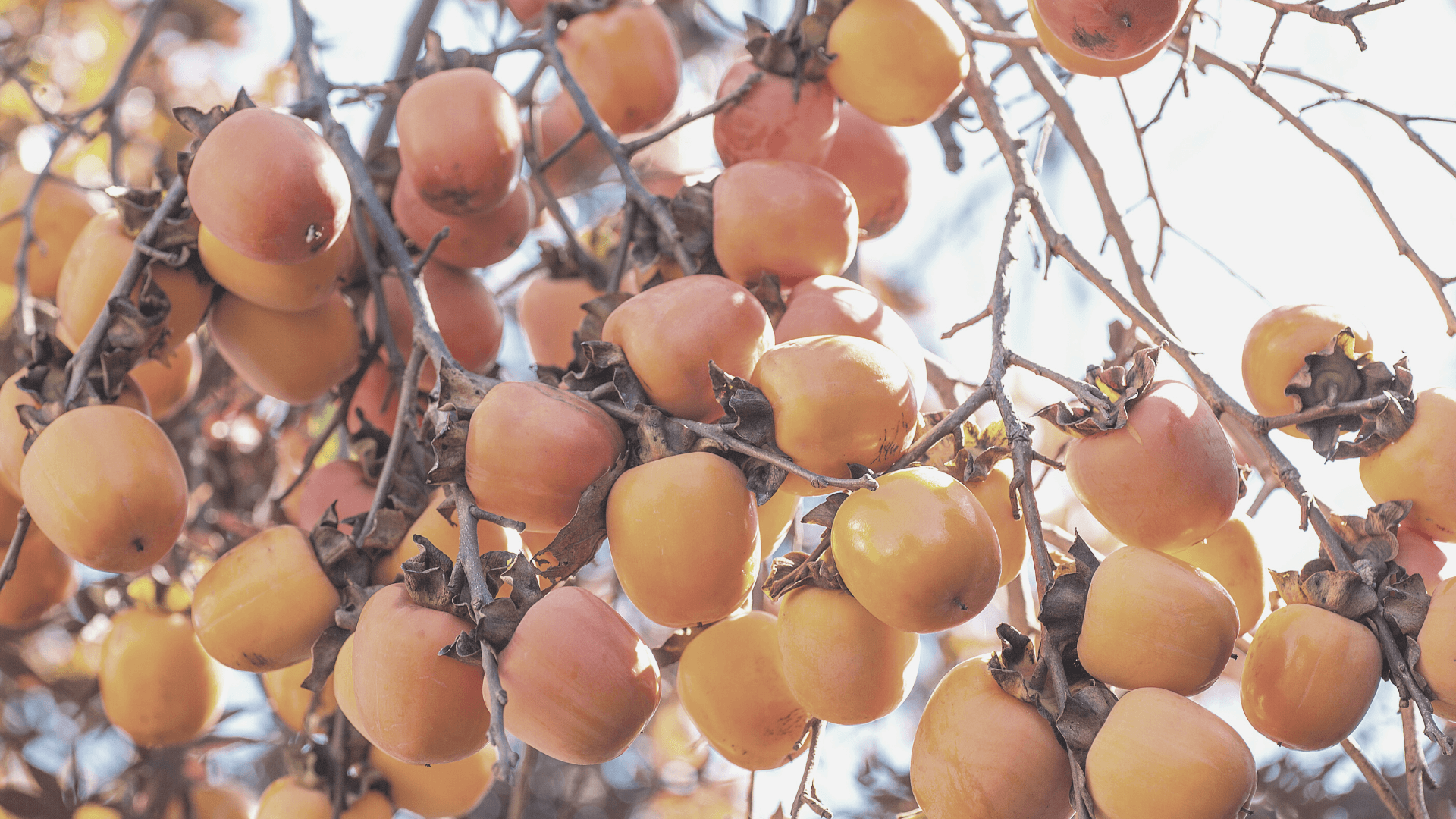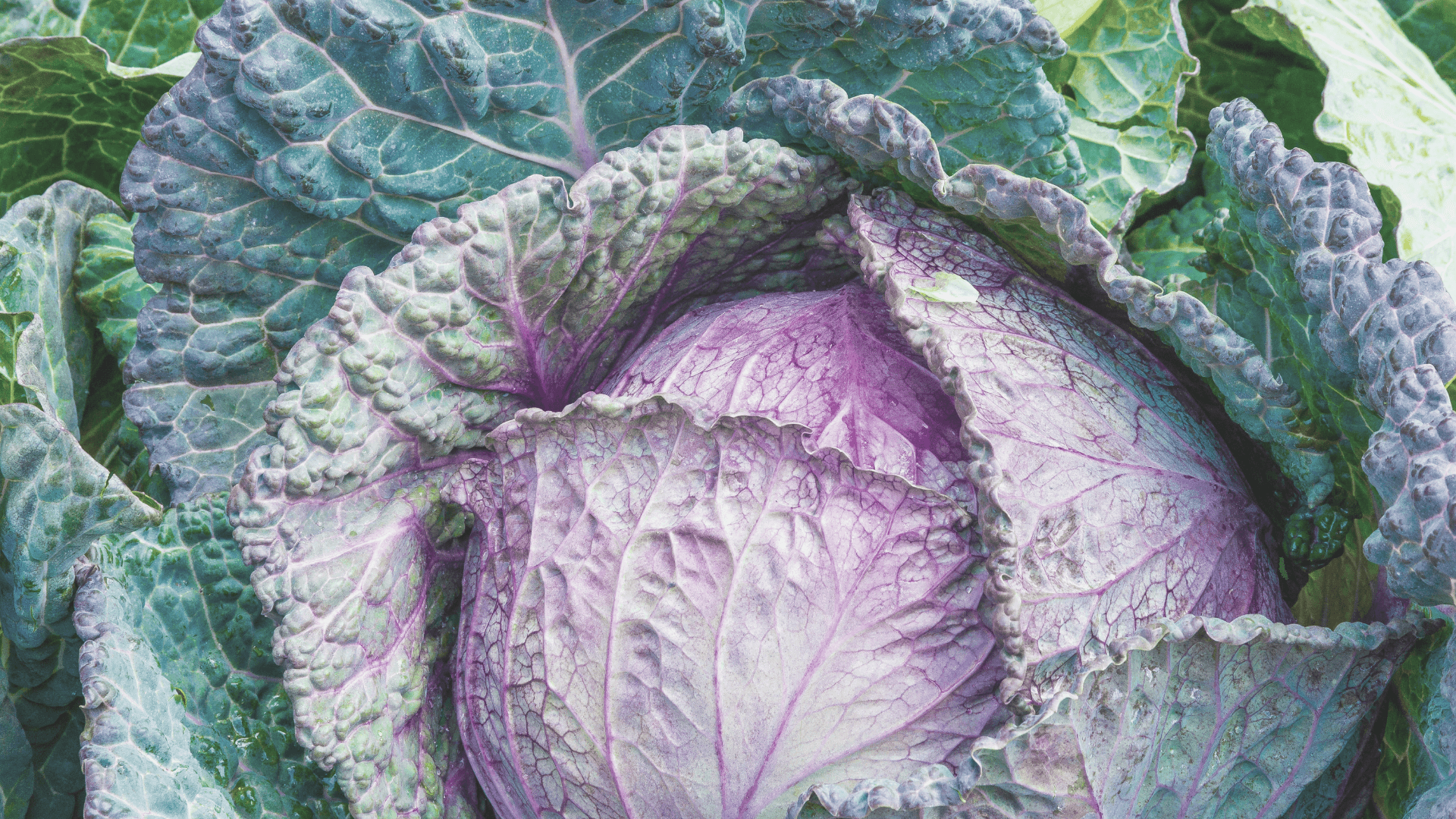Do you know the difference between ingredient s vs ingredients?
Around the holiday season, I’m constantly seeing TV commercials where a sugar cookie company claims you can make their beautiful Christmas Cookies with only 3 ingredients.
Of course, the sugar-cookie dough is one of those ingredients.
That beautiful, little sugar cookie they made had 3 ingredient(s), but NOT 3 ingredients.
The eggs and butter added to the batter are also ingredients. But the cookie dough batter was an ingredient (s) in and of itself, which is clearly filled with ingredients upon ingredients.
Let’s dive deeper into this topic today.
The ingredient(s) vs ingredients discussion is very important for your gut healing journey.
Ingredient s vs Ingredients
Click HERE to save this post for later.

What are Ingredients?
Ingredients are whole. They are pure, untouched foods that when combined together create a new food.
Ingredients = (___) + (___) + (___) = food item / recipe
An example of this is my Chicken Lettuce Wraps with Creamy Honey-Lemon Dressing Recipe.
The ingredients include:
Dressing
- 6 large egg yolks
- juice of 1 lemon
- ½ cup full-fat coconut milk (as long as you use a brand that is only 100% coconut milk)
- ¼ cup olive oil
- 2 tablespoons honey
- ½ teaspoon salt
Ingredients = egg + lemon + coconut milk + olive oil + honey + salt = dressing
Lettuce Wraps
- 6 tablespoons olive oil, divided
- 1 (12-ounce) bag broccoli florets, chopped (about 4 cups)
- 2 cups chopped or shredded cooked chicken
- 1 (20-ounce) can pineapple, drained (about 2½ cups)
- 1 cup shredded carrots
- salt
- freshly ground black pepper4 large romaine lettuce leaves
Ingredients = olive oil + broccoli + chicken + pineapple + carrots + salt + pepper = lettuce wraps
What are Ingredient(s)?
Ingredient(s), though, are many different ingredients that make up one of the recipe ingredients.
Ingredient(s) = (___) + (___) + (___) = ingredient
An example of this is the Simple Mills Chocolate Muffin and Cake Mix.
The ingredients include: Almond Flour, Organic Coconut Sugar, Cocoa, Arrowroot, Organic Coconut Flour, Baking Soda, Sea Salt.
But wait, that’s actually not the full list.
In order to produce your final product (let’s say it was the chocolate muffin), you also need: 3 eggs, 1/3 cup oil, 2/3 cup water, 1 Tablespoon vanilla.
In other words:
Ingredients = almond flour + organic coconut sugar + cocoa + arrowroot + organic coconut flour + baking soda + sea salt = chocolate muffin and cake mix
…….but also, you need to add more. It then becomes:
Ingredient(s) (those just listed above) + eggs, oil, water + vanilla = final product
The marketing tells us: just 5 ingredients.
I’m telling you, it’s actually 11 ingredient(s).
Does this all make sense?!
So Ingredient(s) are Bad?
Please hear me out. I am not saying that we need to vilify ingredient(s) by any means (at least not all the time). I’m not a fan of FEAR-ing people into their way towards living a healthier lifestyle.
Healing the gut requires far more than food.
What I am saying is that we need to understand the difference between ingredients and ingredient(s).
The Simple Mills example is one where I’m definitely not saying ingredient(s) are bad. Their products are incredible, we buy them all the time.
However, I do believe that the food industry needs to be regulated on this more because if a label has 20, 30 or 40 ingredients, the average consumer doesn’t have the time, energy or care to think of these analogies I’ve just taught you.
The Other Reason Ingredient(s) Matter
And there is one other reason why the topic of ingredients vs ingredient(s) matters.
If you are truly trying your very best to heal your gut, you’ll need to be hyper-aware of the differences between ingredient(s) vs ingredients, namely in the beginning of healing.
This is for your elimination diet and journaling purposes.
Let me share a story to illustrate why.
When I first started healing my gut and kept a food journal, I played “detective” trying to understand which foods my body was reacting to.
So a list might look something like this (make note, this wasn’t an actual scenario, just a similar one):
- bok choy
- lemon with water
- brown rice
- Simple Mills Chocolate Muffin Mix
- salmon
- olive oil
In my mind, I couldn’t understand what I might be reacting to. Everything on that list was simple. There were simple ingredients and everything was gluten-free, Paleo, dairy-free, etc.
It wasn’t until I started making note of each ingredient in that muffin mix when I could see that “ahhhhhh……the muffin mix is not low-FODMAP.”
The next day, to experiment, I wouldn’t have the muffin mix.
And I felt so much better.
What would this show me?
Maybe I have SIBO, so maybe I should go get tested instead of dinking around doing more guessing.

Too Much Work
Right now you’re thinking, “Journaling all ingredients in any of the packaged foods I’m eating would take forever.”
And that’s exactly the point.
The more you can focus on ingredients vs ingredient(s) during your healing phase, the quicker you’ll heal.
In my book, A Gutsy Girl’s Bible: a 21-day approach to healing the gut, I state,
When I finally found success with healing my gut, it came down to two main ideas: SIMPLIFY and CUSTOMIZE.
Not doing this correctly is one of my top 7 mistakes made on the gut healing journey.
I’m pretty sure I started my first food journal the summer after Freshman year at college. The journal was filled with food and how many Weight Watchers points each food contained. It also included how much water I drank, if I worked out (how many minutes), my weight, and other things like that.
Read about all 7 mistakes HERE.
While I am adamant that gut healing is not a diet, I am also adamant that gut healing is a diet.
It’s super conflicting, but makes perfect sense.
And I hope this part of the equation helps you even more.
Don’t ever hesitate to reach out with any questions.
If you liked this post, you might also enjoy:
Xox,
SKH
🤰 bloating be gone! weight loss through optimal gut health for women
💃ʜᴇᴀʟ ʏᴏᴜʀ ɢᴜᴛ. ʜᴇᴀʟ ʏᴏᴜʀ ʟɪfe.
🫶🏻 founder gutbyome.com






![Hummus Recipe [no tahini]](https://agutsygirl.com/wp-content/uploads/2020/02/hemp-hummus-featured-agutsygirl.com_.png)
4th Keep your diet are closer to nature-All natural foods are minimally processed and contain no artificial ingredients as. …There are often more ingredients in the artifical flavoring than in the processed food that it is made for. Related tips A Food manufacturers are required to list all ingredients in the food on the label.